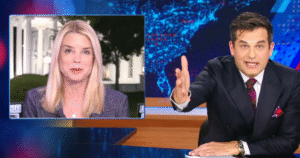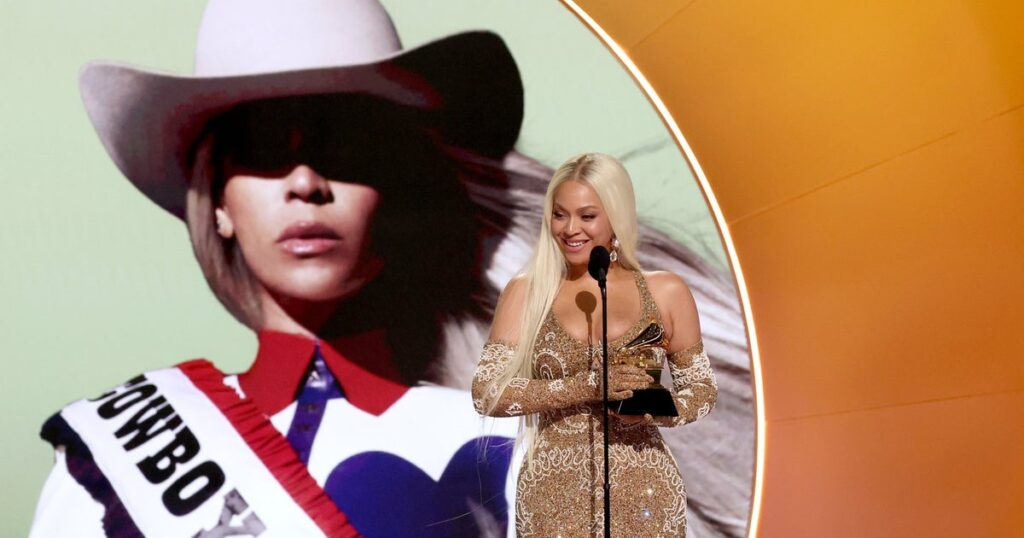Live concerts and sporting events are more expensive than ever lately. Tickets for Beyoncé’s Cowboy Carter Tour currently range from $72 to over $2,000, as one example. According to Pollstar data, the 2024 average ticket price for a top 100 touring artist was $135.92.
Amid rising inflation, mass layoffs and a volatile economy, more Americans are turning to “buy now, pay later” (BNPL) loans through providers like Affirm and Klarna to afford these expensive events.
These services allow consumers to pay for their tickets in smaller installments instead of all at once. In the StubHub checkout process for a Cowboy Carter ticket, for example, consumers can buy a $90 ticket for $15.61/month, or in six interest-free payments.
And for a growing group of Americans, this kind of loan has replaced using a credit card.
Unlike with a credit card, people applying for a BNPL loan “can be approved for credit within seconds, and they typically don’t do a credit check,” explained Ed deHaan, a professor at Stanford University’s Graduate School of Business. He said BNPL loans can be the “first choice” payment option for many young people who don’t have a credit card, have limited credit history, or have a low credit score.
In a Lending Tree survey conducted this April of 2,000 U.S. consumers ages 18 to 79, around half reported using “buy now, pay later” loans to buy their clothes, phones, home decorations, events ― and even groceries. In fact, about 7 in 10 BNPL users were young people ages 18 to 28, including 26% who have had three or more BNPL loans at one time.
“People are cash-strapped right now,” said Jen Hemphill, an accredited financial counselor. “They don’t have enough money, and [a BNPL loan] is just an instant solution to their problems.”
But before you use a BNPL loan to make your big purchase, you should know the unique risks these loans have.
The Pros And Cons Of Using ‘Buy Now, Pay Later’ Loans
The big advantage ― and potential danger ― with a BNPL loan is the ease with which you can spend a lot of money quickly. On a credit card, you must deal with a recurring monthly bill, but a BNPL loan allows you to have varying payment schedules. Some may see this flexibility as a blessing that allows you to pay off a one-time large expense like a laptop on your preferred schedule.
“If you can use it responsibly, then, yeah, it’s great,” deHaan said, noting that BNPL companies are serving populations who may not be able to access credit otherwise.
“If I didn’t have a credit card and I mostly pay everything in cash, and I went online to buy something substantial … I might do that,” deHaan said as one scenario. “I think one loan is probably pretty easy to sort of mentally account for.”
But once you have several BNPL loans on different schedules, it could soon turn into a logistical nightmare.
DeHaan gave the example of having 15 different BNPL loans at one time: “So every day, you can have multiple deductions from your bank account as these loans are being repaid,” he said. “And for me, I just really struggle to see how people can mentally keep track of all of that, relative to a credit card where you’ve got one balance, one month-end payment.“
Some BNPL providers require borrowers to set up automatic payments for their loans, and many charge a late fee for missed payments, which can lead to trouble down the line.
A BNPL provider does not have to report to your financial lenders how much debt you are taking on, and you might start taking on more debt than you can repay comfortably. DeHaan’s research has found that BNPL users are more likely to have bank overdraft charges than nonusers.
Even if you are good at paying your BNPL loans on time, deHaan said it can come at the expense of paying off other significant debts like your auto loan or cell phone bill.
“The BNPL providers are good at getting you to prioritize your BNPL payment, because it automatically comes out of your account every two weeks, they immediately cut you off if you miss a payment, your credit limit goes up when you make payments,” he explained, “so people prioritize that payment, but they’re not making something else.”
You should always read the fine print before you use a BNPL loan, particularly if it’s a boutique BNPL credit system like the one Coachella uses. According to a Billboard report, more than half of 2025 Coachella general admission attendees purchased their tickets through payment plans.
But under the 2025 Coachella BNPL system, customers incurred an additional $41 charge just for using the service. Usually, a BNPL company does not charge users an upfront fee just for using it. The Coachella payment plan is “a bad deal to begin with,” deHaan said. “That’s a high interest rate that you’re paying.”
“A concert ticket might be a really good example of something that would attract [you] to spend beyond [your] means,” deHaan said. “You convince yourself momentarily that you’ll be able to make these payments, and before you know it, you’re not making them.”
In worst cases, if you miss a payment, you could be “out a couple 100 bucks and you don’t have a ticket to the show,” he said.
Whether they scare or excite you, you can expect “Buy Now, Pay Later” money arrangements to keep expanding.
During the Biden administration, the Consumer Financial Protection Board ― an independent federal agency ― cracked down on fintech products, including BNPL companies. But deHaan noted that the current CFPB under Donald Trump is backing away from these regulations. In March, the CFPB signaled that it would spike its interpretive rule, released last year, that would have brought some credit card protections to “buy now, pay later” products, including a right to dispute charges and to demand a refund from lenders.
As a result, “I think we will see now even more alternative credit products popping up,” deHaan said.
And it will be up to consumers to stay on top of those payments. “When it’s easy and it feels doable, then you do it, but then you don’t realize the financial trouble you can get into if you continue to stack up those “buy now, pay later [loans],” Hemphill said.
Hemphill said that ideally, people would build up their savings for “fun funds” like concerts, so that “you’re treating that savings like a bill” instead of relying upon “buy now, pay later” arrangements to treat yourself.
But for now, too many people have the mentality of “I’ll deal with it later. I really want to go to this concert,” Hemphill said.
Read the full article here








